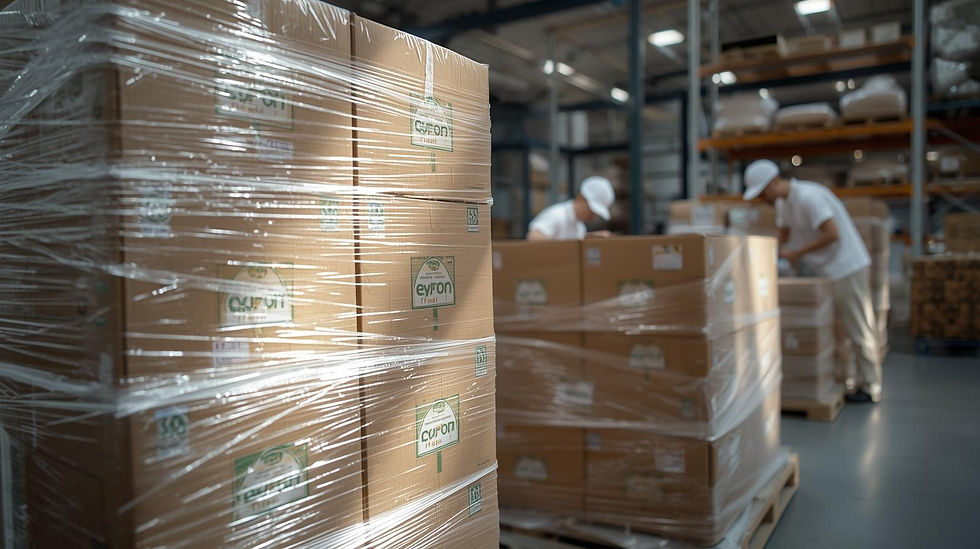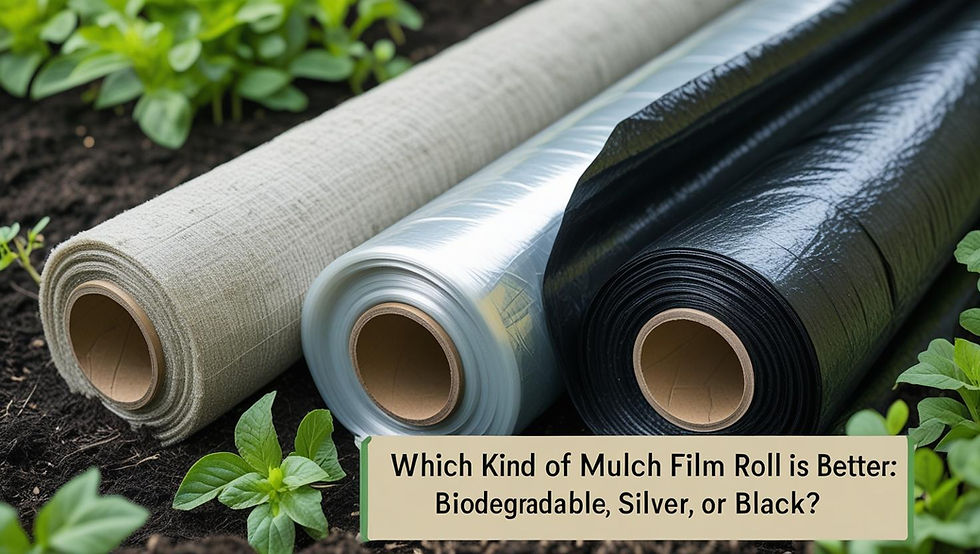How to Pick the Best Biodegradable Shrink Wrap for Packaging Your Products
- Rahul Solanki
- Aug 30
- 4 min read

Introduction
One of the key concepts of contemporary business is sustainability. Companies in a variety of sectors are reconsidering packaging to satisfy consumer demands, adhere to more stringent environmental standards, and lessen their environmental impact. In addition to being a useful requirement, packaging offers a chance to support international sustainability objectives. Among the eco-friendly options available, biodegradable shrink wrap stands out as a choice that integrates responsible environmental performance with product protection. Businesses can improve their green credentials and make better decisions while maintaining cost-effectiveness and efficiency by knowing how this material works, its advantages, and the things to look for before making a purchase.
Understanding Biodegradable Shrink Wrap
What is Biodegradable Shrink Wrap?
When heat is applied, a thin film known as shrink wrap contracts tightly around products, providing protection, security, and a polished appearance. Compostable polymers, starch blends, and plant-based resins are used to create the biodegradable version of this packaging film. These films are made to decompose spontaneously in composting or industrial degradation environments, in contrast to traditional wraps that remain in landfills for hundreds of years. They avoid the long-term harm linked to petroleum-based plastics and eventually return to the environment as innocuous compounds.
Benefits of Biodegradable Shrink Wrap Film
The use of biodegradable wrap provides several notable advantages:
Reduced Environmental Impact – It helps divert tons of plastic waste away from oceans and landfills.
Durability and Protection – It maintains the protective qualities of traditional wraps, keeping goods safe from moisture, dust, and physical damage.
Cross-Industry Usability – From food to retail, electronics, and industrial goods, biodegradable film adapts to many packaging needs.
Brand Reputation – Companies that adopt eco-friendly packaging often find themselves more attractive to environmentally conscious consumers.
Factors to Consider When Choosing Biodegradable Shrink Wrap
Material Quality
The performance of the wrap is dependent on the quality of the raw material. Superior resins guarantee improved stretch, clarity, and tensile strength. Poorer materials may not offer sufficient protection or may deteriorate too quickly.
Thickness and Strength
Different gauges of shrink films are produced. Products that are heavy or have irregular shapes can benefit from thicker films because they are more resistant to punctures. Although thinner films use less material, they might not always provide the necessary durability.
Shrinkability and Cling Properties
How well a shrink film conforms to a product after heat is applied is its main performance indicator. Good cling qualities keep the film from slipping during storage and transportation, while uniform shrinkage guarantees tidy packaging.
Equipment Compatibility
Applying shrink wrap can be done manually or with automated equipment. To prevent downtime or needless expenditures, companies should make sure the biodegradable film they have selected is compatible with their current sealing and shrinking machinery before making a purchase.
Certifications and Standards
Check for adherence to certifications like EN 13432 and ASTM D6400. These give consumers peace of mind that environmental claims are true by ensuring that the product satisfies accepted international standards for compostability and biodegradability.
Tips for Effective Use of Biodegradable Shrink Wrap Film
Proper Storage
Storage conditions have an impact on packaging films. They ought to be stored out of direct sunlight in a cool, dry place. Poor storage can shorten shelf life by reducing shrink performance or causing early degradation.
Application Best Practices
Achieving a neat, polished finish requires controlled tension, proper overlapping, and consistent heating. Ineffective methods or overheating can waste resources and decrease productivity.
Educating Staff
Correct handling of biodegradable wraps requires employee training. In everyday operations, proper handling guarantees that environmental benefits are fully realised and prevents needless waste.
FAQ
1. What makes biodegradable shrink wrap different from regular shrink wrap?
Usually petroleum-based and non-biodegradable, conventional shrink wrap can last for centuries in landfills. Biodegradable substitutes are more sustainable because they employ naturally decomposing compostable polymers.
2. How long does it take for biodegradable shrink wrap film to decompose?
Temperature, humidity, and microbial activity are some of the variables that affect decomposition time. Films may break down in a matter of months in industrial composting facilities, but it may take longer in natural settings.
3. Can biodegradable shrink wrap film be used for food packaging?
Indeed, a large number of biodegradable films meet international safety standards and are safe for use in food. Verifying that the product has the necessary certifications for direct food contact is crucial, though.
4. Does biodegradable shrink wrap cost more than traditional film?
Advanced production techniques and the use of renewable resources usually result in a slightly higher initial cost. However, the advantages of sustainability, regulatory compliance, and long-term brand value frequently outweigh the price difference.
5. What should businesses look for when sourcing biodegradable shrink wrap film?
Technical support, supplier reputation, compatibility with current equipment, and certifications are important factors. Selecting a reputable supplier guarantees consistent quality and performance while supporting sustainability objectives.
Conclusion
Choosing environmentally friendly packaging materials is now a business requirement rather than an option. Businesses can make well-informed decisions about packaging solutions by taking into account factors like certifications, equipment compatibility, thickness, shrinkability, and material quality. Efficiency and sustainability are further improved by staff training and appropriate storage and application methods. Businesses can actively contribute to minimising environmental harm while simultaneously protecting their products by selecting biodegradable shrink wrap. In the end, spending money on environmentally friendly packaging improves consumer confidence, brand reputation, and long-term company viability.
For More Information Visit: Tilak Poly pack Pvt.Ltd



Comments